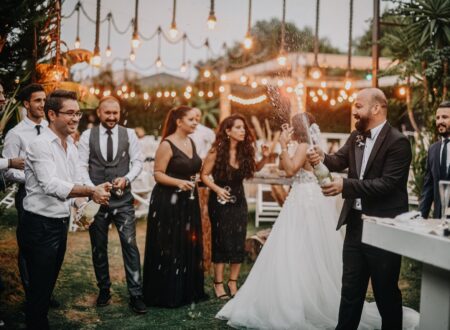Writing your own wedding vows is one of the most personal and powerful ways to express your love and commitment to your partner. Unlike traditional vows, writing your own gives you the opportunity to tell your unique love story, share inside jokes, speak from the heart, and promise your future in a way only you can.
But let’s be honest—staring at a blank page, trying to find the perfect words to sum up everything your partner means to you? It’s intimidating. That’s why we’re here to help. Whether you’re a poet at heart or a little unsure of your writing chops, this guide will walk you through how to craft wedding vows that are authentic, heartfelt, and deeply memorable.
Why Write Your Own Vows?
Before we dive into the “how,” let’s talk about the “why.”
Personal vows:
- Reflect your relationship’s unique journey.
- Make your ceremony feel more intimate and meaningful.
- Let you express promises that actually matter to you as a couple.
- Create a deeply emotional moment for you, your partner, and your guests.
It’s not about impressing anyone—it’s about being real. So let’s talk about how to do that.
Step 1: Reflect on Your Relationship
Start by taking a quiet moment to think about your relationship. This is the foundation of your vows.
Ask yourself:
- When did you know you were in love?
- What do you admire most about your partner?
- How have you grown together?
- What are some of your favorite memories as a couple?
- What does marriage mean to you?
Jot down your thoughts, no editing yet. These raw reflections are gold—you’ll use them to shape your vows later.
Step 2: Get Inspired (But Stay True to You)
It’s totally okay to look for inspiration. Read famous love letters, poems, or other people’s wedding vows. Watch romantic scenes in your favorite movies. But don’t feel like your vows need to sound like a Hollywood script. They just need to sound like you.
Remember:
- You don’t have to be overly poetic or dramatic.
- Humor is totally allowed (and often appreciated).
- Sentimentality is beautiful, but so is honesty and simplicity.
If you’re a little goofy as a couple, let that shine through. If you’re more quiet and romantic, that’s beautiful too. There’s no one right tone.
Step 3: Find Your Structure
Your vows don’t need to follow a strict format, but having a rough structure can help keep things organized. Here’s a simple format that works well:
- Start with a story. A sweet or funny anecdote is a great opener. It sets the tone and reminds your partner (and your guests) why you’re standing there together.
- Say what you love about them.
Share a few things you truly admire. It could be how they make you laugh, how supportive they are, or how they always remember to bring you coffee in bed. - Make your promises.
This is the heart of your vows. Make meaningful, personal promises that reflect your relationship. Mix serious and lighthearted ones for balance. - Look to the future.
Share your hopes and dreams for the life you’ll build together. It could be as simple as growing old side-by-side or raising a family, traveling, or always finding time to dance in the kitchen. - Close from the heart.
Wrap up with a final statement that feels true to you—something sweet, funny, or even tear-jerking.
Step 4: Make It Personal (and Specific)
Details make your vows come alive. “I love you because you’re kind” is nice, but “I love how you leave encouraging notes in my lunch on rough days” paints a clearer, more touching picture.
Here are some examples of personal touches:
- “I promise to always let you pick the movie—even if it’s a cheesy rom-com.”
- “I vow to be your biggest cheerleader, your soft place to land, and your forever adventure buddy.”
- “I love that you sing to our dog like she’s a baby—and how she actually listens.”
These specific, honest moments are what make your vows stand out.
Step 5: Practice—But Don’t Memorize
Once you’ve written your vows, read them out loud. Practice until you feel comfortable with the pacing and tone. This helps you:
- Catch any awkward phrasing or overly long sentences.
- Add emphasis to emotional moments.
- Avoid reading like a robot.
Tip: Bring a neatly written or printed copy to your ceremony. It’s totally fine to read your vows—what matters is delivering them sincerely.
Bonus Tips for Meaningful Vows
- Keep it around 1–2 minutes. Anything longer and it might feel like a speech. Short and sweet tends to land better.
- Write them early. Don’t wait until the night before your wedding. Give yourself time to revise and feel good about them.
- Coordinate with your partner. You don’t have to share vows in advance, but agree on tone and length to keep things balanced.
- Don’t stress over perfection. Your vows don’t need to be literary masterpieces—they just need to be honest and from the heart.
Example: A Simple, Meaningful Vow
“From the moment we met, you’ve made my life brighter, funnier, and fuller. I love the way you bring joy to every room, how you believe in me even when I doubt myself, and how you make the ordinary feel extraordinary.
I promise to always choose you—even on the hard days. I vow to support your dreams, laugh with you, and grow with you. I will be your rock, your cheerleader, and your safe space.
I can’t wait to build a life with you, one adventure at a time. Today and always, I choose you.”
Final Thoughts
Writing your own vows is a powerful act of love. It’s your chance to speak from the heart, honor your journey, and make a moment that both of you—and your guests—will never forget.
So take a deep breath, trust yourself, and start writing. You already have the words inside you. All you have to do is let them out.





